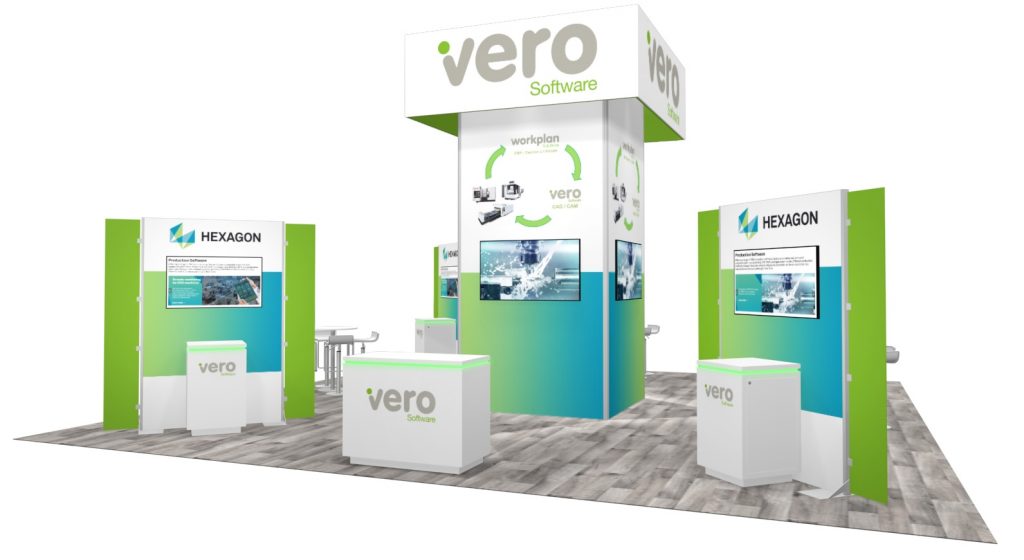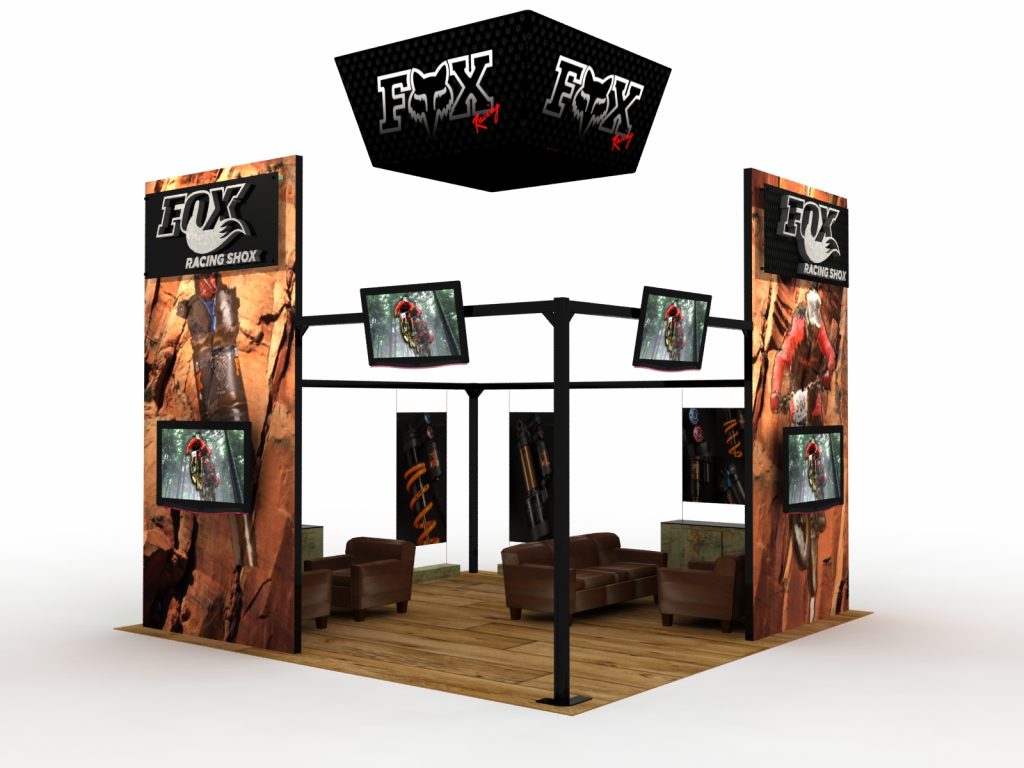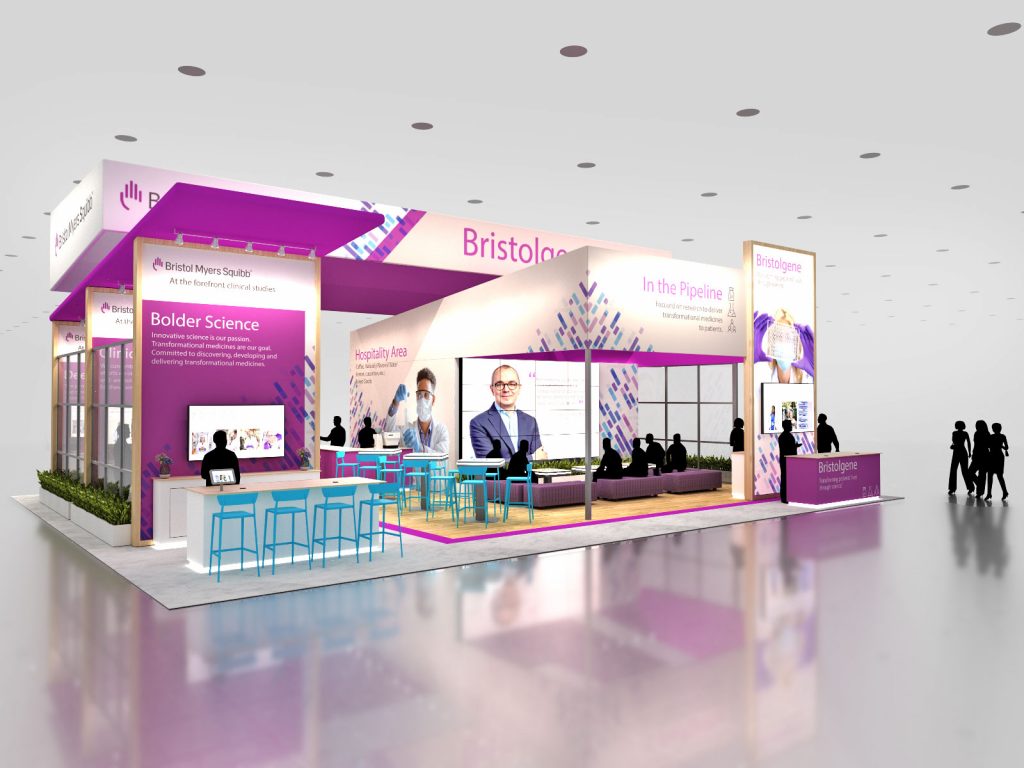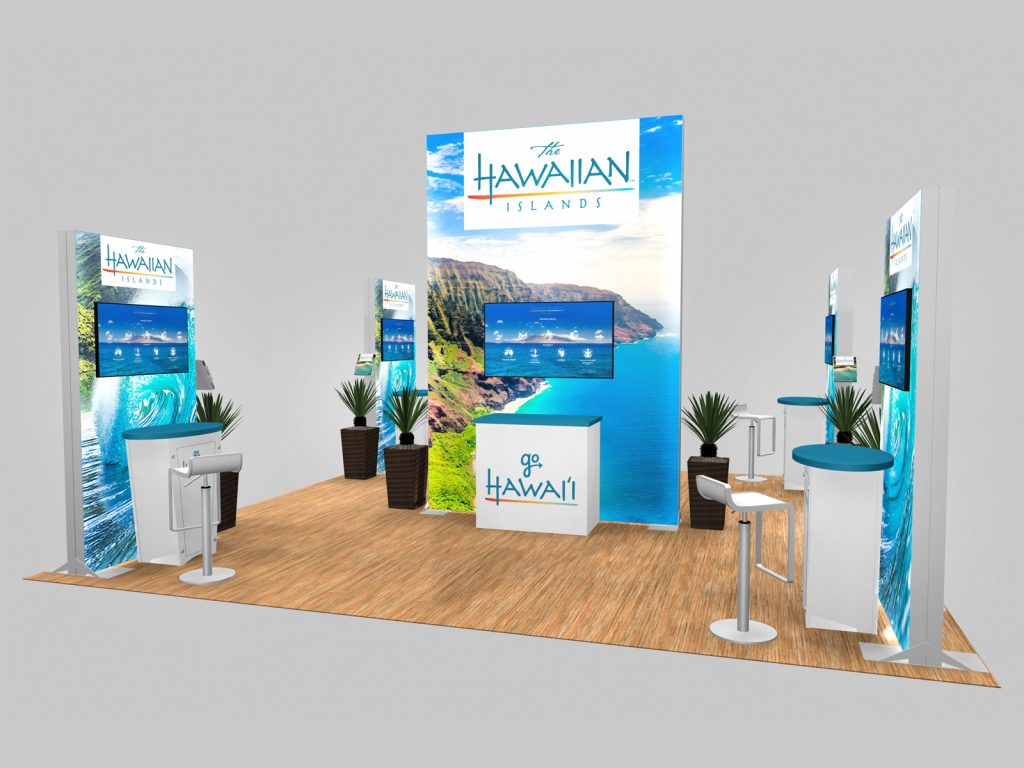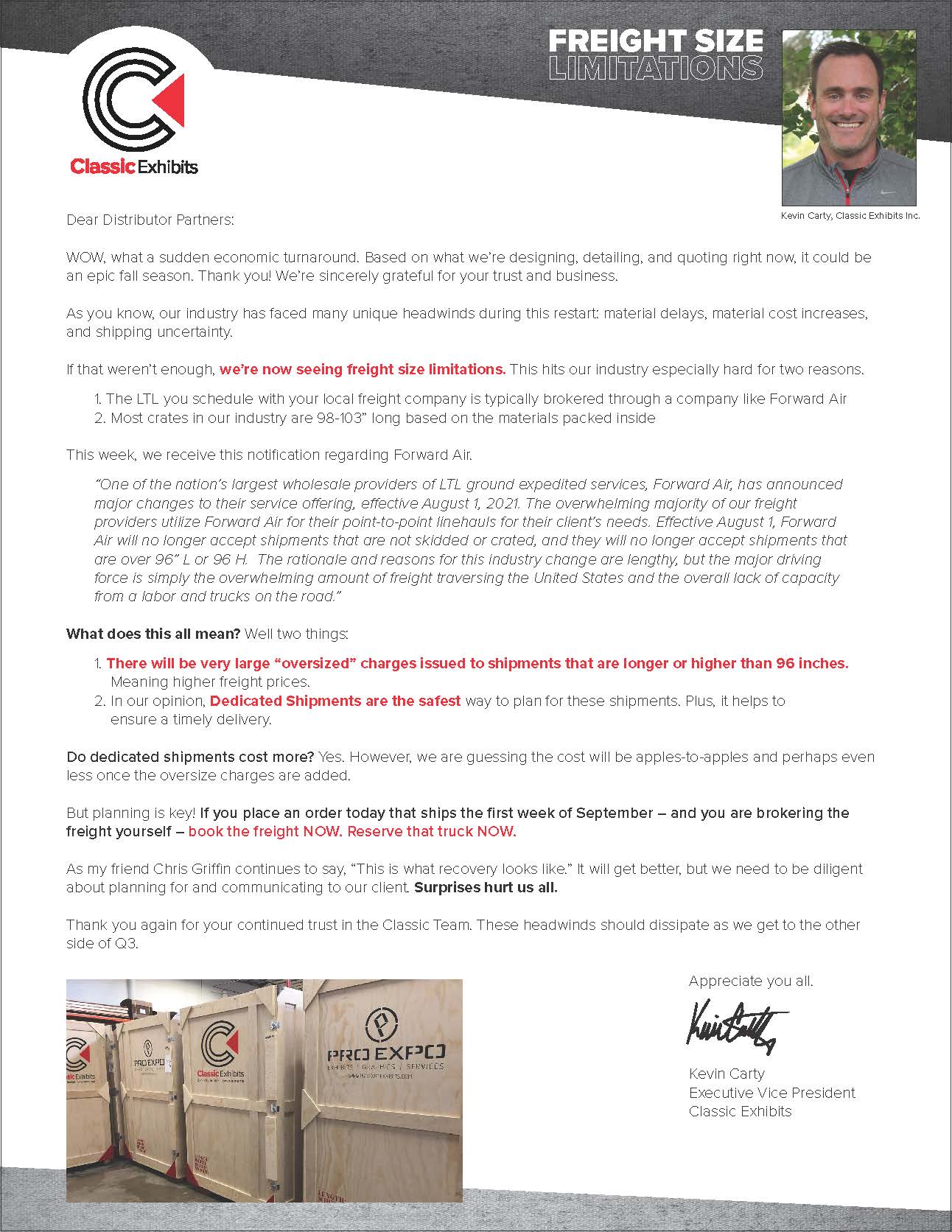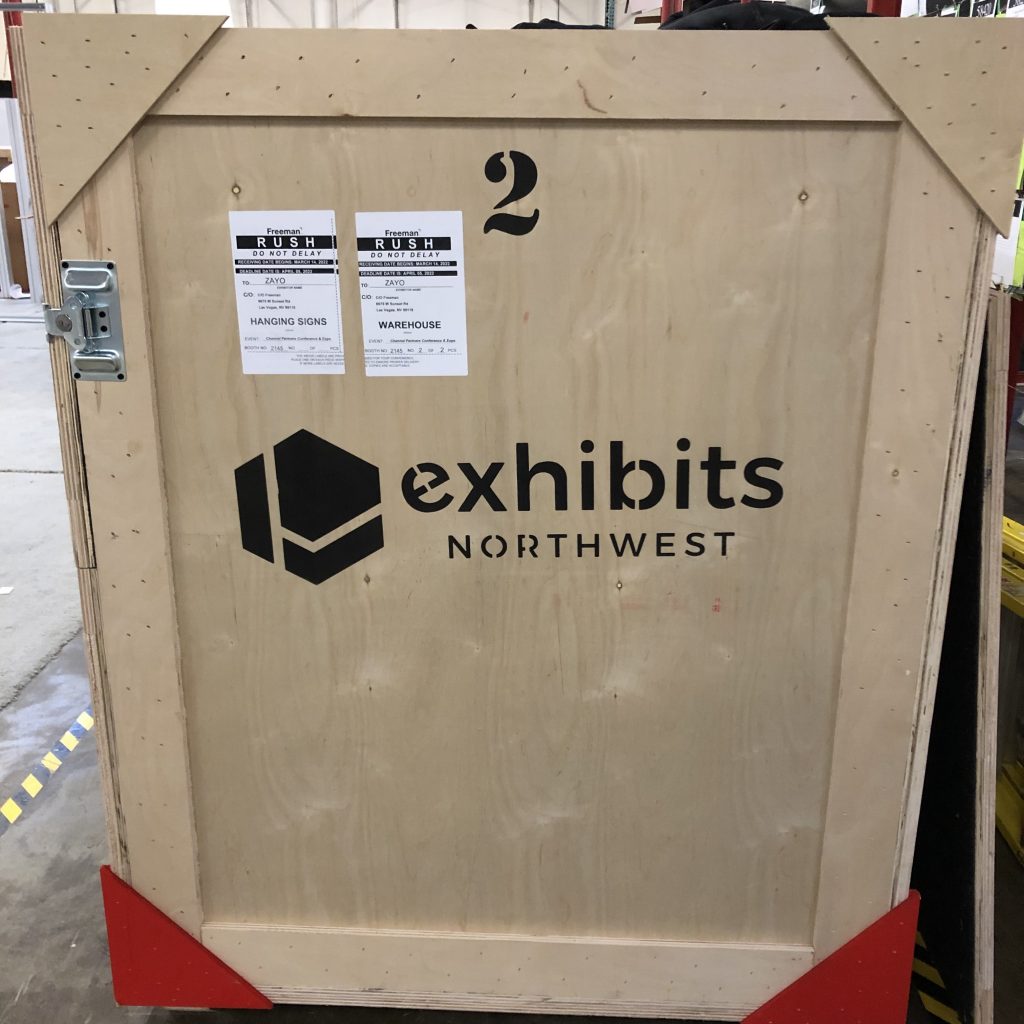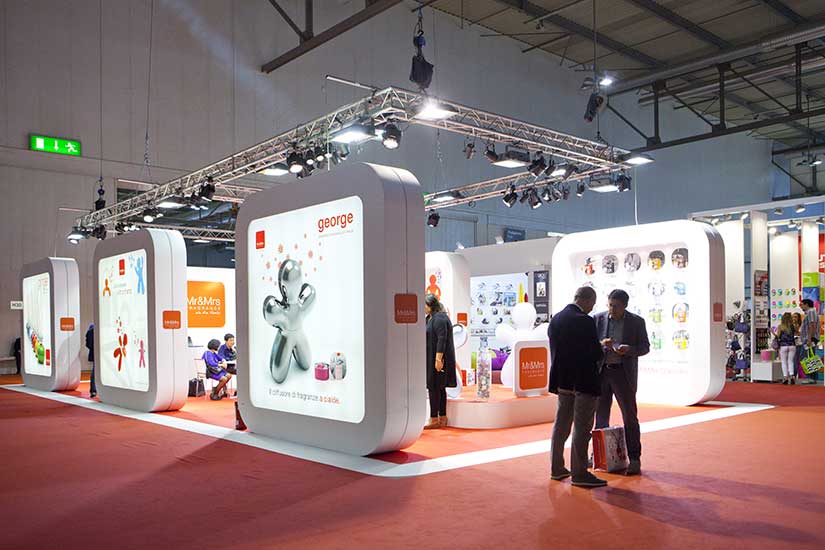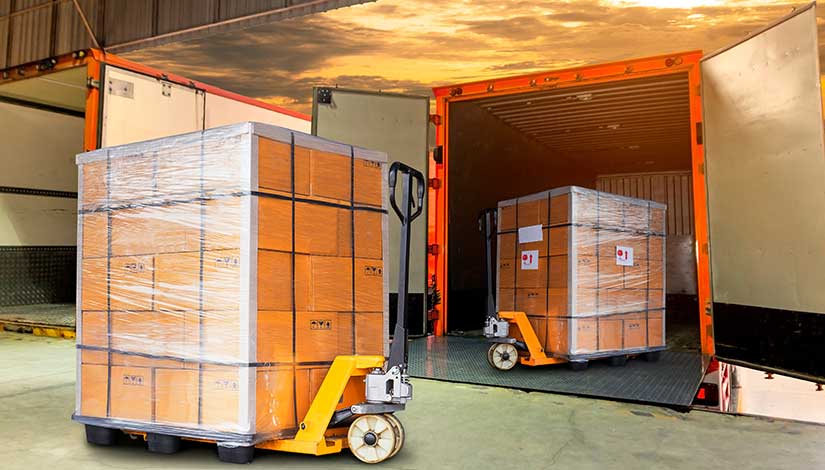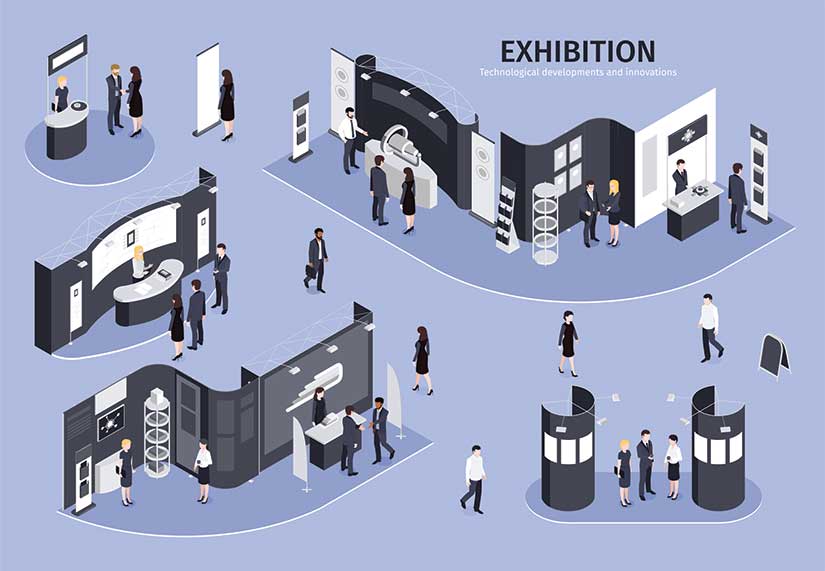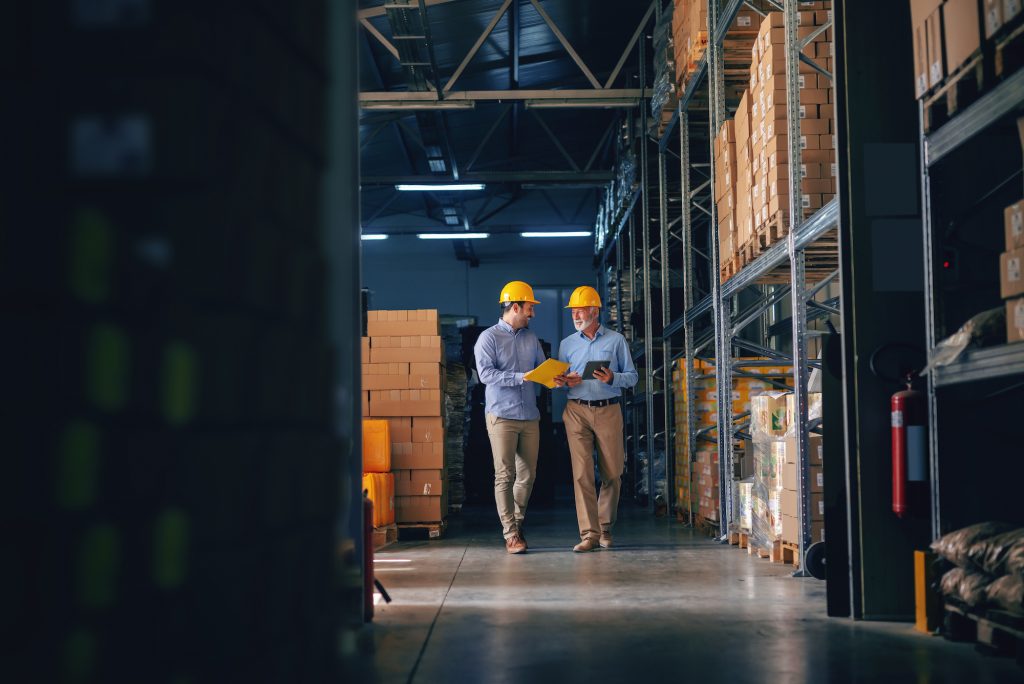
Trade show success hinges on planning and experience. This article will explain common trade show services and how to prepare for the big event. Exhibitors who optimize their trade show marketing, whether they’re a trade show expert or a newcomer, will significantly increase their return on investment. Knowledge is power when preparing for trade shows.
Trade Show Services: Table of Contents
- What Are Trade Show Services?
- Onsite vs. Offsite Services
- Labor, Electrical, and Internet
- A/V, Cleaning, and Security
- Freight & Insurance
- Packaging & Kitting
- Booth Design Services
- Marketing Services
- Trade Show Management
- Turnkey Services
- Why Work with Classic Exhibits
Trade Show Exhibit Services: How to Choose the Right Support for Your Booth
Whether you have a table top display or a 40 x 50 double-deck exhibit, at some point you’ll need to tap into trade show services. It might be as straightforward as ordering cleaning services for your booth space during the show or as immersive as hiring and supervising labor to install and dismantle your exhibit.
If you’re new to trade show services, this may seem both confusing and puzzling, since some of the services would be routine requests if ordered outside a trade show convention center. In the convention center, it’s an alternate universe. Your best defense is knowledge. That knowledge will not only save you money but also ensure a (mostly) organized experience.
Will there be surprises? Of course, because the rules can change from show to show and from convention to convention center. Even the same show can rewrite the rules for trade show services the next year based on new labor agreements or a different General Show Contractor.
Strap on your trade show seatbelt and make sure your airbag is working because we’re going to guide you through the laundry list of trade show services. It could get bumpy… and that’s OK. Ask questions. What you learn today will make your next trade show less stressful (and more successful) both for you and everyone on your team. Whatever your gender, it’s important for you to be your organization’s Trade Show Mama Bear.
Onsite Trade Show Services vs. Offsite Trade Show Services
Onsite trade show services include services available at the convention center, exhibition hall, or meeting space. General Service Contractors (GSC’s) typically provide these services for show management.
Several months before the show, the GSC or Show Management will email exhibitors a link(s) to show services. The website will list the available services prices, ordering, and deadlines. In addition, the site will explain the services the exhibitor must order from the GSC or subcontractor and the union regulations at the show site. Details matter. Not every show or every venue has identical regulations and ordering processes. If in doubt, contact the GSC or show management with any questions.
Finally, the deadlines for ordering services are not arbitrary. The GSC’s have early bird prices to encourage exhibitors to order them weeks, even months, in advance. It allows the GSC to plan for the equipment they’ll need and to schedule the appropriate number of employees. Ordering early not only saves the exhibitor money but it also gives the GSC the opportunity to contact the exhibitor if they see any issues on the order form.
Trade Show Onsite Labor
Show management contracts with the GSC to provide the show site installation and dismantle labor services (I&D). The GSC labor company may also provide the decoration (pipe and drape, aisle carpet, and registration counters). They are responsible for ensuring each installation is completed on time and the facility is cleared after the event.
Using onsite labor is convenient but not mandatory. Exhibitors can contract with any labor company as long as the labor company complies with the local rules and regulations as well as the show policies and procedures. These independent companies are called Exhibitor Appointed Contractors (EACs). For a list of North American EAC’s, see www.eaca.com.
The onsite labor contractor has a service desk onsite, and their labor forms are conveniently included with the show forms. If you need more labor on the show floor, you can easily request it. Many exhibitors use the show labor since it is convenient… Those that don’t use onsite labor generally have a working relationship with an EAC labor company.
At a union-regulated show site, the unions define what you can do during set-up and dismantle. Generally, there is a ratio of a few laborers to one company representative. You are permitted to handle all your products. The labor crew is responsible for handling display components, power tools, and ladders. However, most crews are flexible if you demonstrate good faith.
Planning is very, very important. Remember to schedule time for flooring and electrical before you schedule a set-up crew to assemble your booth. Likewise, plan for a delay in getting your crates delivered to your booth space at the end of the show. It may take the GSC several hours to deliver all of the crates so coordinate labor and freight appropriately.
Trade Show Onsite Electrical / Internet
The GSC also provides electrical services. Only licensed electricians can set up and dismantle electrical wiring and connections in your exhibit. In the most literal sense, this includes screwing in a light bulb, but most exhibitors take this to mean the wiring and circuitry. Electricians review the wire grounding and the breaker loads and look for exposed or unsafe hacker wiring and connections. Electricity is the primary threat on the show floor. High power runs everywhere. Fires are a real danger when you consider all the wood, carpet, and plastic concentrated in an exhibit hall.
Internet services are typically handled by the show hall. Basic Internet service may be available at no charge, but high-speed service, either wireless or wired, must be ordered. A warning regarding Internet connectivity. Exhibitors often assume the Internet connection during installation will be the same speed during the show. It’s not. During the show, the hall will be packed with exhibitors and attendees, all tapping into the wireless connection. If your marketing and sales presentations in the booth rely on a stable Internet connection, you would be wise to spend a little extra for a secure, high-speed connection.
Trade Show Electrical Requirements
The online services website will include a form for ordering electrical services. You will need to specify outlet location(s) with a floor plan, along with the total watts or amps. Most people are unfamiliar with how to add up all their electrical needs, but it’s less complicated than it may first appear. Monitors, LED light fixtures, and computers have published watt and amps. For other equipment, consult with your internal experts or contact the GSC’s customer service team.
Wiring between outlets to fixtures and electronics poses the most obstacles. Exhibits in the US require grounded power cords (3 prongs), which translates into larger wires. Hiding these wires can be challenging if you don’t prepare in advance. Buildings hide wiring under the floor, in the roof, and in the walls. Exhibits don’t always have that option. They hide wires under sub-flooring or carpet padding or drop power from the ceiling overhead.
If you have a lot of electrical requirements in your booth, then consider adding a list of the items to the electrical floor plan you send with your order. Better yet, indicate on the floor plan where the electrical items will be needed. Electricians are very good at reading and extrapolating electrical information. They frequently catch errors and make adjustments on the fly, thereby saving you time and hassle during the exhibit set-up.
If you have questions, call the GSC. These are routine questions for them.
Wiring Your Trade Show Booth Space and Exhibit
You have two options. Power can be run beneath your flooring or dropped from the ceiling. If you choose the floor, you will want your flooring to hide the wiring. Carpet padding combined with plush carpet conceals most wires. Other flooring such as wood and flooring tiles require a channel routed in the underside of the material for the wiring. Whenever possible, request that the electrician use flat cords rather than round cords.
An electrical ceiling drop is more expensive than running wires across the floor but may be necessary depending on the booth configuration and power load requirements. If you are considering a ceiling drop, contact the GSC to discuss the ceiling configuration over your booth space. Also, discuss the option of floor outlets. The GSC can help you determine which is best for you.
When you select an exhibit to purchase, make sure you understand and are comfortable with how the booth will be wired at the show. Just as important, make sure you communicate where you expect electrical devices in the exhibit, including all lighting fixtures. Be proactive about wire management and discuss with your exhibit consultant during the design phase. It’s much, much cheaper to add grommets, electrical covers, and wire management during the build process than at the show.
Onsite Trade Show Audio/Visual (A/V) Rental
You can rent computers, monitors, LED video panels, touchscreen kiosks, projectors, and much more. They’re available from the show A/V contractor, independent A/V providers, and often from your exhibit house. And while renting A/V equipment can be expensive, it’s not nearly as expensive as purchasing the equipment. In addition, A/V providers often have a service desk onsite to assist with any issues before or during the show. For many exhibitors, monitors, video walls, tablets, and touchscreen kiosks are critical elements of their trade show presentation. Finally, shipping any A/V equipment requires custom packaging to prevent freight damage. Renting eliminates that cost and headache.
Your online show forms will have forms from the show A/V contractor. There is typically a discount if the equipment is requested in advance. Better yet, contact your exhibit house and ask them for their recommended A/V provider.
Onsite Trade Show Housekeeping Services
To keep your exhibit looking great throughout the show, there are two options. You can arrange to have your exhibit cleaned during the show with an onsite housecleaning service, or you can bring a vacuum and cleaning supplies and perform the task yourself. Onsite housekeeping companies contract with the show decorator to provide the service to exhibitors. Your online show services website should have a form for ordering this service. Cleaning typically includes vacuuming the carpet and emptying the trash. Cleaning fingerprints from windows and laminate surfaces remains the exhibitor’s responsibility.
Consider having plastic (called Visqueen) placed over the carpet during set-up. It isn’t cheap, but it is effective against spills, trash, and forklift tire tracks. Remember to remove the plastic immediately before the show opens.
Trade Show Booth Cleaning Tips
Vacuuming your booth daily is a good idea if you have any kind of plush carpet, especially if it is very light or very dark in color. If your carpet is new, then plan on heavy fuzzing for the first few uses. Whether you use a cleaning service or do your own booth cleaning, it’s a good idea to have a cleaning kit packed in your booth that travels from show to show. Below is a list of items to include in a cleaning kit.
 Trade Show Cleaning Kit Contents:
Trade Show Cleaning Kit Contents:
- Glass cleaner
- Laminate polish
- Paper towels
- Scissors
- Knife, razor, or box cutter
- Velcro
- Multipurpose screwdriver with flat and Phillips heads
- Finger polish remover (acts like lacquer thinner for removing adhesive gum)
- Clear packing tape
- Carpet tape (in case you need to tack a corner down)
- Duct tape
Onsite Trade Show Exhibit Security Services
Exhibit halls can be a magnet for pilferage and espionage. If you want to guard against either of these, show management or the exhibit hall can assist you in securing your exhibit area. The onsite trade show security provider can post a security officer in your booth for the times you specify.
Pilferage can occur from labor, attendees, or employees. Because shows are known for giving away free stuff (incentives), some folks simply take this invitation a half step further. It’s a nuisance when pilferage involves promotional incentives, but it can be catastrophic if it is a product or prototype that will be missed by attendees if it is gone.
Store your incentives in a lockable storage cabinet. If you don’t have one, the next best place is behind the booth or anywhere out of site.
Wait until just before the show opens to set out your incentives. Many staffers from other exhibits prowl the aisles before the show opens collecting incentives. Pack incentives or any valuable product or electronic equipment in unmarked inconspicuous boxes. Consider sealing them after each opening especially if they are not under lock and key.
Espionage can be the double-edged sword of business-to-business exhibit marketing. While everyone is working to impress attendees with breakthroughs and innovations, they run the risk of providing proprietary technology to direct competitors. Make no mistake about a competitor’s willingness to take a quantum leap at the expense of a rival. There are a number of tips for protecting proprietary information. Consider having a security guard posted in the booth every day before and after show hours. The presence of these security officers will stop wandering competitors from trespassing.
 Onsite Trade Show Freight Services
Onsite Trade Show Freight Services
Onsite trade show freight shipping refers to the shipping company subcontracted by the GSC to provide inbound and outbound freight shipping service. Like all show services, onsite freight shipping has the advantage of convenience. The onsite freight company maintains a service desk at the show. They will be most familiar with the receiving and sending aspects of the show and facility. If you use a different shipping company and your company does not arrive to pick up your freight after the show, your freight will be “force shipped” with the onsite shipping company at your expense.
Most major carriers are familiar with shipping to trade shows and the general marshaling process that occurs as trucks line up to unload their exhibit freight on the docks of the show facility. Whatever means you use, you will want to provide clear instructions to ensure that your freight is received at the show facility and delivered to your booth space.
Freight is priced by dimensional and actual weight depending on the service. For exhibits shipped ground freight, the crate contents rarely exceed the dimensional weight formula. However, for exhibits shipped via air freight, there are limits in size and weight. Actual weight can easily exceed dimensional weight just as shipping a large box with light contents can incur an additional oversized charge. Freight companies are set up to provide instant quotes based on the shipment’s size and weight, your zip code, and the final destination zip code. These companies extend significant discounts on standard rates according to a company’s annual shipping volume.
Trade Show Freight Insurance
Regardless of how you ship your exhibit, you will want to insure it for its full retail value. Without insurance, if your booth is lost or damaged, the standard protection from the carrier is approximately .50 per pound. Consider this. If your $100K exhibit is lost in transit and it weighed 3000 lb. and shipped in three crates, you would be paid only $1500. Alternatively, if you paid the insurance, you would be reimbursed the full $100K with proof of value such as the invoice. Don’t take the risk. There is a good possibility you will experience some kind of freight loss or damage over a number of trade shows.
Trade Show Package and Kitting Services
Preparing for a trade show can be time-consuming for exhibitors who have a myriad of non-trade show responsibilities. Most exhibit houses have programs, including storage, staging, and kitting services, to assist their clients with these tasks. Graphic storage, promotional products, literature, and demo kits are ideal for kitting services, especially for exhibitors with active trade show programs.
Kitting services for trade show exhibitors involve the process of bundling multiple items together into a single, pre-assembled package or “kit” for easy distribution at a trade show. Instead of an exhibitor having to gather and organize various individual components on-site, a kitting service handles this preparation beforehand.
For example:
- Assembly and Packaging: Organizing promotional materials, product samples, informational brochures, giveaways (swag), business cards, and other items, and assembling them into a cohesive package.
- Inventory Management: Managing the inventory of individual items that go into the kits, ensuring that all components are available and accounted for.
- Customization and Branding: Incorporating custom packaging, branding, and labeling to reflect the exhibitor’s company image, like custom boxes, branded tape, inserts, or gift wrapping.
- Logistics and Shipping: Handling the storage, transportation, and delivery of these kits directly to the trade show venue or the exhibitor’s warehouse. This often includes optimizing shipping to reduce costs.
Benefits:
- Increased Efficiency
- Reduced Costs
- Improved Organization
- Enhanced Brand Experience
- Focus on Core Activities
- Reduced Damage and Loss
Kitting services act as a logistical partner for trade show exhibitors, taking the burden of assembling and organizing various materials so that exhibitors can maximize their presence and impact at the event.
Trade Show Booth Design Services to Elevate Your Brand Presence
Whether you are planning to purchase a new exhibit or simply upgrade your current booth, you’ll probably work with a trade show booth designer at some point. An exhibit designer will save you time and money and they will assist in refining your messaging and creating an attractive and efficient structure to showcase your brand.
Building a trade show exhibit is unlike building any other structure, primarily because it has to be assembled to be deconstructed, packed in crates, and shipped securely. In addition, a trade show exhibit has to attract visitors in a highly competitive environment, communicate a clear and compelling message in seconds, and serve as a practical sales tool for the booth staff and attendees.
Trade show booth designers have spent years specializing in booth design. And in most cases, they’ve worked with other companies that have exhibited at the same or similar trade shows. They know what’s worked. And what hasn’t worked for that audience? For example, a food show, like the Fancy Food Show, requires a very different booth than a display at a consumer electronics show, like CES.
The benefits of working with a professional trade show designer go well beyond their creative skills.
Expertise and Creativity: A professional designer has the knowledge and experience to create a booth that is visually appealing, on-brand, and functional. They can translate your company’s message into a compelling design that will grab attention and stand out from the competition.
Time and Resources: Designing and building a trade show exhibit can be a time-consuming process. By hiring a designer, you can free up your internal team to focus on other aspects of the trade show, such as sales training and lead generation.
Cost-Effectiveness: While there’s an initial investment in design, it can save you money in the long run. A designer can help you avoid costly mistakes, like choosing the wrong materials or exceeding space limitations. They can also source materials and fabrication services efficiently.
Compliance with Regulations: Trade show venues have specific rules and regulations regarding booth size, materials, and construction. A designer with experience will ensure your booth adheres to all guidelines, preventing last-minute scrambling or even disqualification.
Technology Integration: Many designers are familiar with incorporating interactive elements and digital signage into trade show booths. This can enhance the visitor experience and make your company appear more innovative.
Project Management: Often, a designer will handle the entire project, from the initial concept to the final installation and breakdown. This takes a significant burden off your shoulders and ensures a smooth and stress-free experience.
Overall, hiring a trade show exhibit designer, like the professionals at Classic Exhibits, can significantly increase your chances of success at a trade show regardless of the size of your booth space. Their expertise can help you create a booth that effectively attracts leads, builds brand awareness, and ultimately delivers a positive return on your investment.
The Value of Offsite Trade Show Services & Support
Given the cost of trade show marketing, exhibitors are tasked with making wise financial decisions to ensure their investment is successful. One of those decisions is whether to use onsite or offsite providers for products and services. Offsite suppliers include rental furniture, A/V equipment, installation and dismantle labor, flooring, lead management, and even the design and build of your display.
In most cases, the service will be comparable between onsite vs. offsite providers. However, onsite providers are focused on that specific show whereas offsite providers are more interested in your long-term business. They want you to contract with them when you have a show in San Diego or one in Chicago or your BIG SHOW every year in Las Vegas.
Let’s use labor as an example. An offsite labor company that handles your exhibit multiple times learns the tricks and tips of your booth and your specific requirements. As a result, there’s a good chance they’ll not only be able to assemble it faster, but they’re also more likely to be extra careful when packing it. After all, they’ll be assembling it again and the last thing they want are surprises when opening your crates. In time, they know what to expect and the experience is less stressful for everyone, which is the gift that just keeps giving.
Trade Show Marketing Services to Maximize ROI
You don’t have to go it alone. For many marketers, trade show marketing is outside their comfort zone and may be a new responsibility for them. Trade show marketing is marketing, but a very specialized form of marketing which requires both experience and a deep dive into the jargon, regulations, and often unstated assumptions about trade shows. Fortunately, there are companies, services, and people who are laser-focused on elevating your exhibition success.
Your Exhibit House. Yes, they’ll design, build, and store your exhibit. But that’s just the tip of the iceberg. They want you to succeed. Your success means you’ll continue to invest in your trade show marketing program, which benefits them. Many exhibit houses have A/V services, graphic designers, promotional products experts, and technology integrators. And if they don’t have a specific service or product you need, they’ll know who does have it.
Lead Retrieval Software Partners. Most exhibits default to the show designated lead retrieval services. That could be a mistake. Choosing a lead retrieval software partner for all your shows not only saves you time since your company information, documentation, and data gathering only has to be entered once, but also means you have a database of attendees aggregated across multiple events. In addition, lead retrieval providers have gamification services, CRM integration tools, and event management software.
Technology Partners. Keeping up with technology trends in the exhibit industry, and any industry, can be challenging. LED video tiles, touchscreen kiosks, LED motion lighting, etc. are now commonplace on trade show floors. Thankfully there are technology providers who are experts on the products and have extensive rental inventories.
Trade Show Consultants. Trade show consultants offer strategic guidance and practical support for all aspects of an exhibitor’s trade show program. They act as expert partners, helping businesses navigate the complexities of exhibiting and ensuring their efforts align with overall marketing and sales goals. Key services include marketing and promotion, ROI measurement and analysis, booth etiquette, and sales training at trade shows.
Classic Exhibit Distributors are experts at trade show marketing and have vetted their resources partners over the years. And while searching for a plumber on the web might make sense, searching for a capable trade show service provider is another matter. Consult with the people you trust, whether it’s your exhibit house or an exhibitor in your industry with experience.
Trade Show Management Services
What are “trade show management services”? It’s less straightforward than it appears. We’ve already discussed “services” in earlier sections. Who handles them can vary, not only from show to show but also depending on the venue.
Exhibition, Convention or Show Hall Management: Every exhibit hall or event venue has a team who handles sales and marketing, schedules shows, maintains the facility, and negotiates contracts with unions, food vendors, and janitorial services. They are responsible for the management and success of the building. For smaller shows, meetings, or events, they may even serve as the show management.
Show Management: Whether it’s a local boat show or the annual trade show for the American Cardiology Association, the “show” is owned and managed by a company or an association. They are responsible for everything associated with the show without necessarily handling every activity. For example, they identify the location for the show and negotiate space and services with the facility management. They also contract with a General Show Contractor to handle drayage, electrical, pipe and drape, signage, labor, etc. However, the show management devotes much of their time to marketing the show, developing education sessions, scheduling speakers, creating social events, soliciting sponsors, and registering attendees and exhibitors.
General Show Contractor (GSC); Most exhibitors interact primarily with the General Show Contractor and often confuse the GSC with both Show Management or Show Hall Management. As mentioned before, the GSC handles a variety of functions for exhibitors, depending on the show. These may include moving and storing freight, electrical services, cleaning, labor, sign rigging, rental furniture, and in some cases even renting exhibits. The GSC has a contract with Show Management and when an exhibitor hits a wall resolving a problem with the GSC, they should contact Show Management, who typically has a temporary office in the show hall.
Turnkey Trade Show Services for a Seamless Experience
“Turnkey” means “ready to use” or “ready to go.” For a trade show exhibitor, turnkey trade show services refer to a comprehensive, all-inclusive solution where a single provider handles virtually every aspect of their trade show participation, from start to finish. The exhibitor simply “turns the key” and everything is in place.
Turnkey Services typically include:
- Exhibit Design and Fabrication, including graphics
- Storage and Staging of the booth property
- Logistics and Shipping, which can include material handling forms
- Installation and Dismantle, either directly or through an independent labor provider
- Show Services Coordination, like order electricity, cleaning, security, and rigging
- Furniture and Accessories, like rental furniture, flooring and A/V equipment
- Kitting Services
- Promotional Products
- Pre- and Post Show Support
- Staff Training
Benefits:
- Stress Reduction: The exhibitor has minimal logistical worries, allowing them to focus on sales and marketing.
- Time Savings: Significant time is saved in planning, coordination, and execution.
- Cost Efficiency: A single provider can often achieve economies of scale, avoid hidden costs, and prevent costly mistakes.
- Professionalism: Ensures a high-quality, polished, and consistent brand presentation.
- Expertise: Access to experienced professionals who know the intricacies of trade show management.
- Single Point of Contact: Streamlines communication and accountability.
- Consistency: Especially beneficial for companies exhibiting at multiple shows, as the turnkey provider can ensure brand consistency across all events.
Turnkey services are particularly valuable for first-time exhibitors, companies with limited internal resources, or those participating in numerous shows where efficiency and consistency are paramount.
Expert Trade Show Services with Classic Exhibits!
If you’ve made it this far and are still confused, you are not alone. It’s very confusing, which is why working with exhibit professionals is a must. Classic Exhibits has over 200 Distributors throughout North America who are trade show pros when it comes to onsite and offsite services. They’ll guide you through the trade show maze so you can concentrate on achieving your marketing objectives. For more information, contact Classic Exhibits at www.classicexhibits.com.




